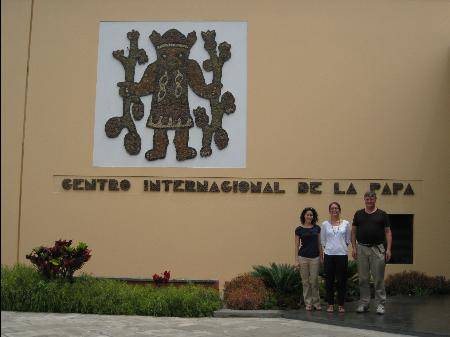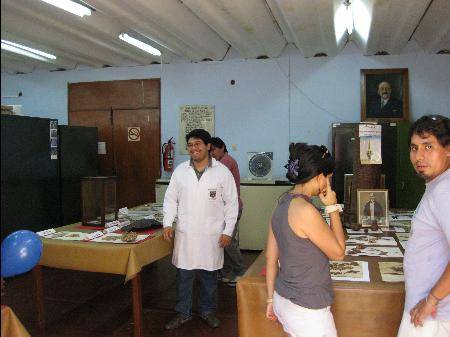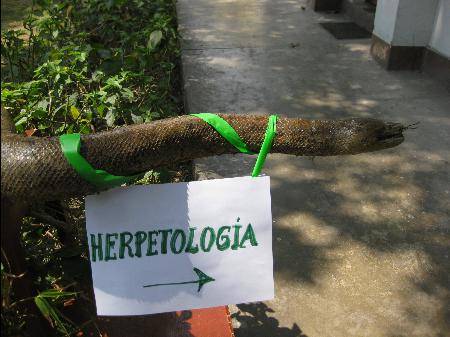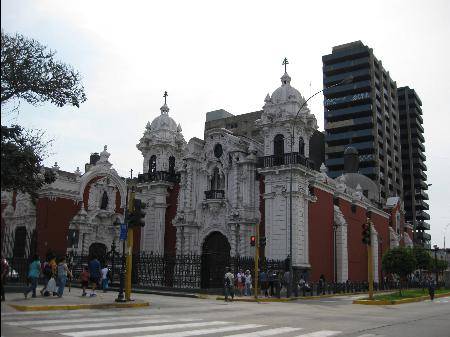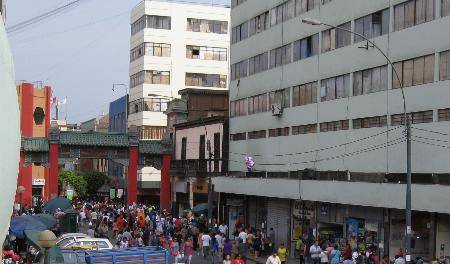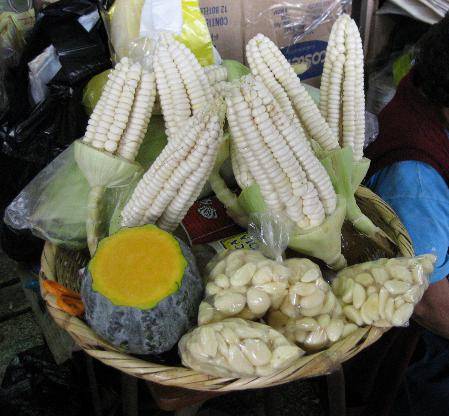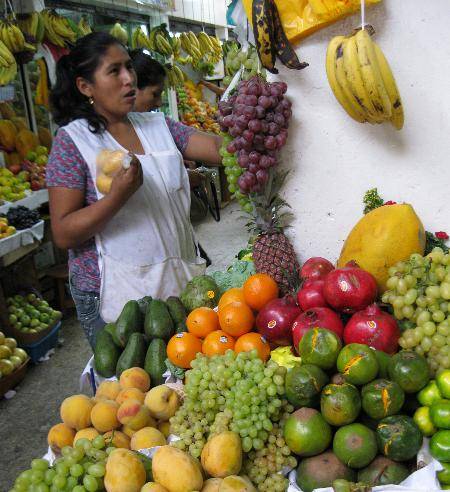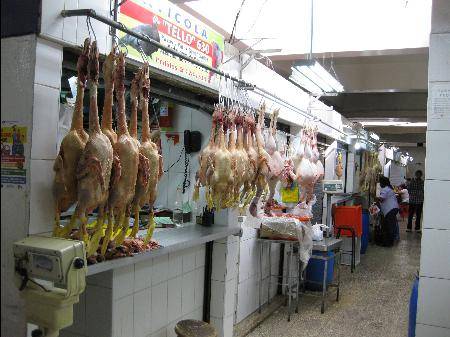Before leaving London I was given a shopping list of field items to obtain in Peru prior to the arrival of the rest of the team. This makes a lot of sense, as things like plastic sheeting, pots, Styrofoam ice coolboxes and string are a lot cheaper here than in the UK and we save on bulk as well. So I was on a mission…
First though, we had another morning in the herbarium – checking on potato distributions after our visit to CIP on Friday where the scientists shared potato distribution data with us, we needed to check to be sure there weren’t collections they needed lurking in the cupboards of the herbarium. And there were! Many of the herbarium specimens that represent unique collecting points were not in the data set – we will now share this back with the scientists at CIP and everyone wins!
Mindy, Tiina and our colleague Reinhard Simon in front of the spectactular CIP logo.
While working away at the database the floor suddenly did a lurch, the cabinets rattled and Johanny, who works with us doing data entry, ran for the door. It was a small earth tremor – not even big enough to register on the US Geological Survey’s earthquake map (they only map those over 2.5 on the Richter scale), but the Peruvian authorities registered it as 4.0 on the scale and with an epicentre just N of Lima but causing no damage. We hadn’t even felt the much bigger event (5.7 on the Richter scale) earlier on in the week the epicentre was far to the south – the internet went off, so we reckon that was the cause! Peru is at the edge of the subducting Pacific plate, and so earthquakes and tremors are common occurrences – it is good to have these little ones, it lessens the probability of a major catastrophic event I guess. I will definitely be visiting the newly-refurbished volcanoes and earthquakes gallery back in South Kensington with a new appreciation!
It was open day at the museum and the staff all had rows of specimens on display and both students and staff members alike were out talking with gusto to the many members of the public who came for the day. It was sunny and nice and everyone was having a great time! Museums really depend on the public visiting and open days like this are so important for letting visitors catch a glimpse of what goes on behind the scenes.
The botany display...
Here's the way to the reptiles and amphibians!!
Noontime came and a friend and colleague, Emilio Perales from the Agrarian University (near CIP), came to help me with the shopping. The Central Market in Lima is not the safest place to be as a foreign woman alone, anyway, shopping is better as a group activity! Off we went into the heart of colonial Lima...
The central part of Lima still has many old colonial churches and buildings... this one is the Iglesia San Martin (I think)...
The market itself is not a building or an area along the street – it covers several city blocks and is composed of shops selling anything you can imagine… Specialism is highly developed and there are tiny shops selling only plastic containers, others selling only paper products, still others with only coolboxes and yet more with only plastic sheeting and rubber bands. The whole area heaves with people – Saturday afternoon might not have been the best time to do this particular task!
Proper shopping involves going to several stalls and bargaining for the best deal for the best product – this is a highly interactive sport. Getting receipts for purchases can also be a challenge – seems strange to be asking for a receipt for something that cost two and half Peruvian soles (the equivalent of 50 pence) – but it is necessary to justify expenditure.
Finally, laden with two coolboxes, many metres of plastic sheeting, a large roll of fabric, several hundred plastic pots and a huge plastic storage box, we had a freshly squeezed orange juice in the fruit section of the inside market – my favourite part of any of these local markets. Beautiful…you just can’t beat it!
Maize in Peru is called choclo and has huge grains - it is served boiled or roasted and is delicious!
Native (the cracked open green ones in the right hand side are lucuma) and imported (pomegranates) fruits all side by side for sale in hundreds of competing stalls - it is grape season in coastal Peru and many varieties are grown...
The duck aisle right down from the fruits...
Shopping done we caught a taxi back to the museum to put our haul ready for the field on Tuesday. It took us ten minutes to get into the tiny car; it was like a puzzle getting all that stuff (plus us!) into the small space. Everything got put away, and now there are just a few more tiny bits and pieces (like a mobile phone I can use in Peru!) to get before we go… we await the rest of the team with anticipation...



